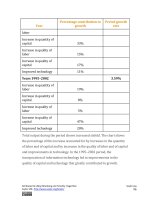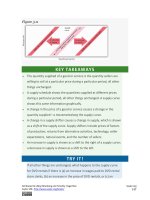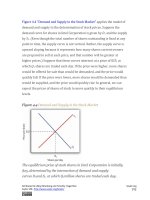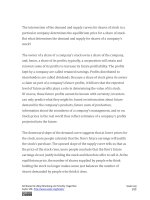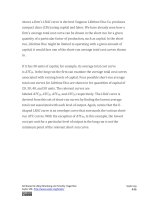Authors libby rittenberg 741
Bạn đang xem bản rút gọn của tài liệu. Xem và tải ngay bản đầy đủ của tài liệu tại đây (525.58 KB, 1 trang )
which Lm units of labor are available). The quantity of labor used by
the monopsony firm is less than would be used in a competitive market
(Lc); the wage paid, Wm, is lower than would be paid in a competitive
labor market.
The firm faces the supply curve for labor, S, and the marginal factor cost
curve for labor, MFC. The profit-maximizing quantity is determined by the
intersection of the MRP and MFC curves—the firm will hire Lm units of
labor. The wage at which the firm can obtain Lm units of labor is given by
the supply curve for labor; it is Wm. Labor receives a wage that is less than
its MRP.
If the monopsony firm was broken up into a large number of small firms
and all other conditions in the market remained unchanged, then the sum
of the MRP curves for individual firms would be the market demand for
labor. The equilibrium wage would be Wc, and the quantity of labor
demanded would be Lc. Thus, compared to a competitive market, a
monopsony solution generates a lower factor price and a smaller quantity
of the factor demanded.
Monopoly and Monopsony: A Comparison
There is a close relationship between the models of monopoly and
monopsony. A clear understanding of this relationship will help to clarify
both models.
Figure 14.4 "Monopoly and Monopsony" compares the monopoly and
monopsony equilibrium solutions. Both types of firms are price setters:
The monopoly is a price setter in its product market; the monopsony is a
Attributed to Libby Rittenberg and Timothy Tregarthen
Saylor URL: />
Saylor.org
741
